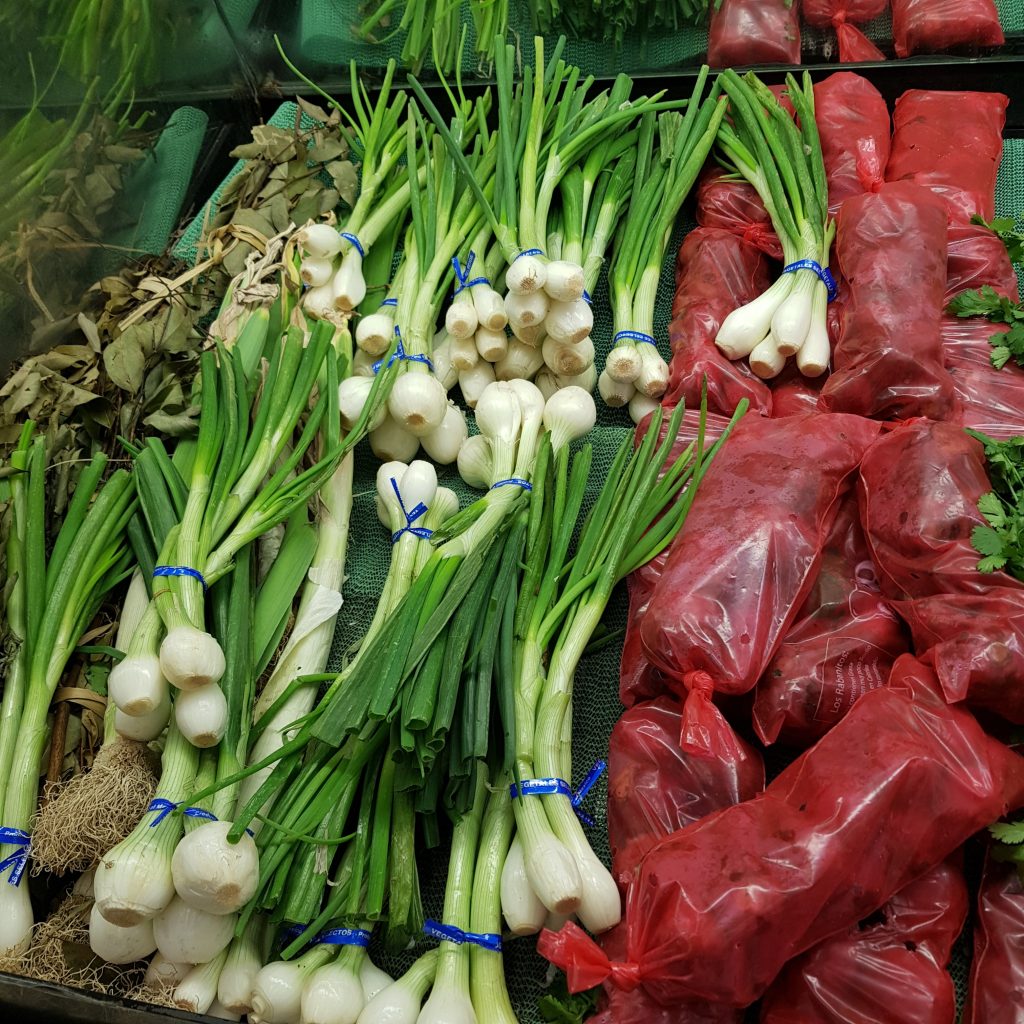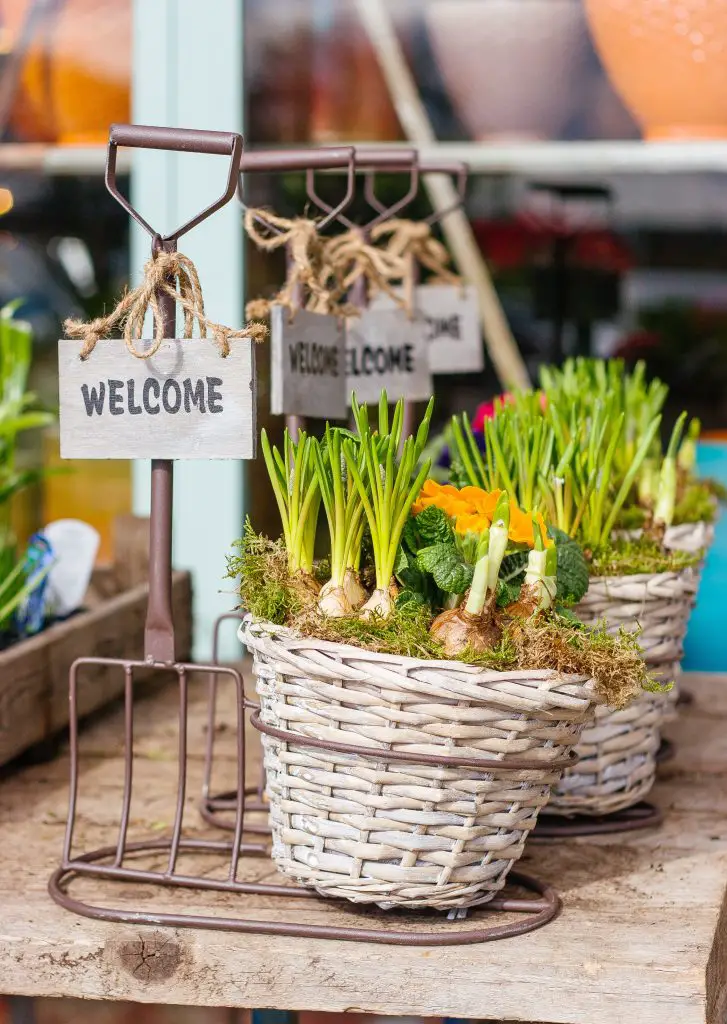Do Green Onions Spread? Are They Invasive? Green onions, also known as spring onions in many countries, are an extremely popular crop to grow at home in your own vegetable garden. However, if you haven’t grown these plants before you may be wondering whether green onions spread readily through your garden or are they something that will remain in a clump where they are?
Green onions do not spread readily through your garden they will generally remain in a solid clump ready for you to pick and eat. If you do allow the green onions to set seed they can self-seed producing a secondary crop in close proximity to the original planting, however, they are certainly not considered invasive in any way.
The only types of onions that do spread more readily are Egyptian walking onions which spread by a different mechanism to green onions. These plants tend to have stalks that fold over onto the ground and once they have made contact with the ground they can generate new roots over time which is one of the reasons why they are referred to as walking onions.
Additionally, any of the members of the allium family that are cultivated in vegetable gardens also fall into the category of plants that do not spread readily these include things like garlic leaks and chives.

What Happens If You Leave Green Onions In The Ground?
One of the other common questions that is asked is what happens if you don’t harvest your green onions and leave them in the ground? The answer to this is that the onions will gradually mature over time and the stalks will become progressively fatter often reaching the thickness of a texta and in some cases developing small bulbs at the base of the plant.
Once the spring onions become mature what will happen is it they will start to set seed which typically means that you will see white flowers forming in a spherical ball shape. These flowers will eventually produce seeds that can be collected for replanting at any stage or they will simply fall on the ground and begin to self-seed.
If you allow this to happen typically what you can expect to see is that the green onions will not grow in a clump but instead will fall on the ground in a more random arrangement with there being one or two spring onions next to each other.
As mentioned earlier in the article the spring onions do not spread particularly far and they produce relatively fine foliage which is rarely a problem for other plants in the garden and so they are generally not considered a problem if left in the garden unharvested.

How To Grow Green Onions
Green onions are a relatively easy vegetable to grow as they will germinate in relatively low temperatures which means that they can tolerate a wide range of conditions and still successfully germinate.
However, most gardeners first sow onions in winter indoors as this will ensure that they get a relatively early harvest. Green onions unlike bulbs onions are typically grown in clumps as this will not affect the growth habit.
Green onions can be produced by specialized seeds or they can be grown from regular bulbing varieties of onions that are simply being picked early. If you are interested in purchasing seeds you would highly recommend that you visit seeds now as they have a very broad range of vegetable seeds to see their website click on the link below.
If you are starting seedlings off in winter it is generally advisable to start them off indoors in seed trays as this will allow you to get them going more quickly. To plant the seed start by filling the seed tray with a good quality seed raising mix and then ensure that the mixture is firmed into each individual cell to create a solid plug.
Doing this is advantageous because it allows you to transplant an entire clump into the garden without having to disturb the root significantly which will help the plants develop faster.
When planting seeds it is best to sow approximately 10 seeds per cell at a depth of approximately half an inch. Once the seeds are in position the seed tray should be placed in a warm sunny location to grow for at least 4 to 6 weeks. However, the seedlings can remain in seed trays for significantly longer than that if the weather conditions are not suitable or there is not space in the garden without having negative effects on the seedlings.

Once the seedlings have reached the point at which they’re ready to plant out into the garden it is best to select a sunny location that has rich moist and free-draining soil with plenty of nutrients. If your soil is lacking nutrients you can add a bag of compost before transplanting the seedlings into the garden.
Clumps of green onions should be ideally planted approximately 10 inches apart in the garden and then the soil should be mulched well before watering the plants in.
As the plants have relatively few pest problems there is very little maintenance required to keep the plants healthy. The main thing is to ensure that the plants received a reasonable amount of water and that the beds are kept weed free to stop any additional competition.
When To Harvest Green Onions
Green onions can be harvested pretty much at any stage during their life cycle, however, it is generally recommended that you do not harvest the plants until the stem is approaching a thickness of a pencil to ensure that you get a reasonable amount of onion from each plant that you harvest.
To avoid having any gaps in supply throughout the year it is generally recommended that you have 2 to 3 lots of spring onions growing at different ages which means you should ideally be sowing seeds every 2 to 3 months during the growing season to ensure that you always have onions on hand if you need them.
I hope you found this article useful and have great success growing green onions at home in your own garden, if you have any additional comments or questions please leave them in the section below.
Relevant Articles
Can You Eat Onions Straight From The Garden?
How Long Does It Take For Onion Seeds To Germinate? How Does Temperature Affect It?
Do Onion Seeds Need Light To Germinate?
Is It Too Late To Plant Onions?

